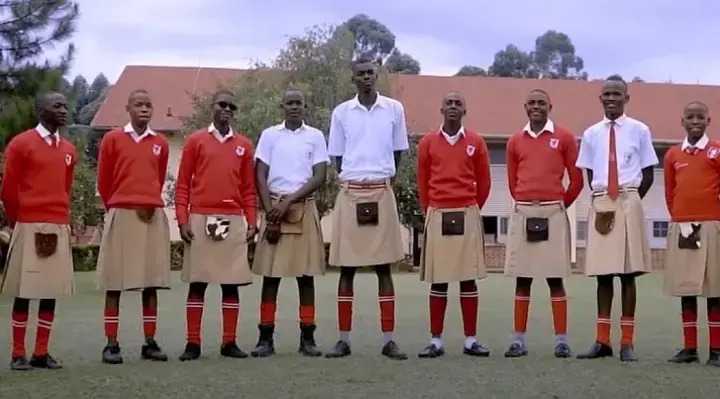Nyakasura Secondary School in Uganda’s Western region has gained attention for its unusual uniform policy, allowing male students to wear kilts, a practice often misunderstood as boys wearing skirts. This tradition is not about challenging gender norms but is deeply rooted in the school’s historical and cultural ties to Scotland.
Founded in 1926 by Scottish missionary Lieutenant-Commander Ernest William Eborhard Calwell, the school adopted the kilt to honor its founder’s heritage after he faced rejection from the Buganda Kingdom for promoting Scottish culture. Since then, Nyakasura has preserved this distinctive uniform as a symbol of its identity, setting it apart from typical Ugandan schools where boys wear trousers.
The kilt’s introduction traces back to Calwell’s vision of blending Scottish traditions with education in Uganda. After settling in Nyakasura, he established the school and incorporated the kilt—traditional Scottish Highland attire—into the male students’ uniform, complete with a belt, knee-socks, a kilt hose cuff, and red leg warmers. Historically, kilts served practical purposes in Scotland and were worn by regiments in the British army, including during World War II, lending the garment a legacy beyond mere fashion. At Nyakasura, this historical significance is emphasized as a way to connect students to the school’s origins while fostering a sense of pride.
Frank Manyindo, the school’s principal, views the kilt as more than just clothing, arguing it builds confidence and nurtures leadership among male students. He describes it as a normal part of the school’s culture, a sentiment echoed by students who, over time, grow accustomed to the attire. A Form Four student, after four years at Nyakasura, expressed ease with the kilt despite initial surprise and occasional teasing from peers at other schools, who sometimes liken it to girls’ clothing. This adaptation highlights how the uniform becomes an accepted and even cherished part of the student experience, despite its departure from local norms.
However, the kilt has sparked mixed reactions beyond the school’s walls. Villagers in the surrounding community often question why boys wear what they perceive as skirts, seeing it as a clash with Ugandan cultural expectations where trousers dominate male school uniforms. This resistance reflects broader tensions between Nyakasura’s Scottish-inspired tradition and local customs, yet within the school, the practice endures as a point of distinction. Reports suggest that while outsiders may find it odd, students and staff have embraced the kilt, viewing it as a unique marker of their institution’s character.
Nyakasura stands out as possibly the only school in Uganda, and even East Africa, where boys wear kilts, making it a rare case in a region where conventional gender-specific uniforms prevail. The policy offers a glimpse into how educational institutions can preserve cultural heritage while shaping student development. By linking the kilt to confidence and leadership, the school suggests that such traditions can have psychological and educational benefits, though it continues to navigate local skepticism. As a legacy of its colonial-era founding, Nyakasura’s uniform practice remains a fascinating blend of history, culture, and education in modern Uganda.
